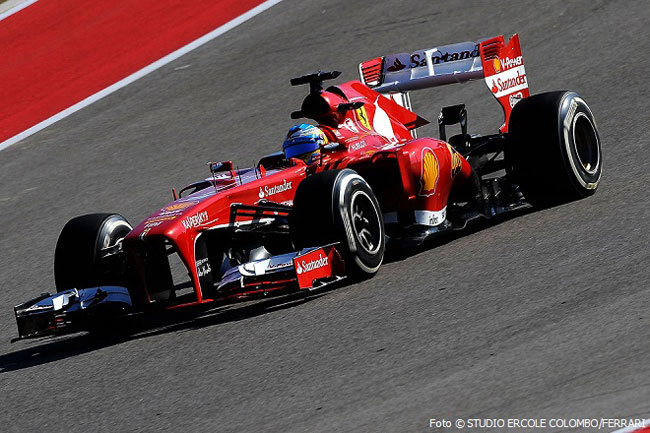Latest end-of-season queries: technical scams and originality

on F1, Featured / by Anna Re / on November 17, 2013 at 19:14 /
Penultimate exam session at the Austin circuit: we'll see who studied well, apart from that nerd Vettel. Passed, postponed and rejected among the "students" in the competition. Opposite is a winter of intense and restorative study ...
From today, only one weekend separates the Formula 1 teams from the bell at the end of the 2013 F1 World Championship. The FIA has not failed to "impose" the dictates according to which to develop the 2014 single-seater for the winter holidays. the car (by inserting or removing new components) during the four test sessions to be carried out during the season, approved for the 2014 championship. A restriction that has a direct consequence: the teams must present the car on the track with the new components already installed , without being able to evaluate improvements or comparisons between different configurations during the test sessions.
For this reason, several teams use the last races of 2013 as test sessions, without giving up the maximum performance of the car in the current race.
Red Bull has not made any aerodynamic changes, but experiments on the rims with Polysil (amorphous solid similar to liquid glass, with an opaque black pigment, used to improve thermal conductivity) with the aim of making the rims warm up faster and keep them constant. the thermal distribution. Mercedes is experimenting with new paints to study the effect on aerodynamic flows. Williams and Sauber have modified the exhausts thus obtaining surprising performances (Valtteri Bottas ninth, Nico Hülkenberg fourth), but without making substantial changes, but re-proposing solutions from 2012.
The Lotus will race with both single-seaters suitable for the Texan track, but already modified in view of 2014, with the long wheelbase (wheelbase longer than 10 centimeters), the configuration preferred by Roman Grosjean and with open air vent near the attack. upper rear suspension. On the Ferrari we read everywhere of "monkey seat", "front wing with upper flap", "bridge side deflector" (we wrote it too): just to pronounce them you would have to enroll in a university training course, with a personal assistant ...
The Circuit of the Americas requires more downforce: this is the purpose of the monkey seat and makes its debut on the Maranello car in the Bahrain GP 2012. It is a very small aerodynamic appendage installed on the lower support of the rear wing, with the purpose of direct heat by improving the interaction of hot air that goes from the bonnet to the rear wing. The monkey seat in the final part of free practice was eliminated from Alonso's F138.
The front wing is designed to generate aerodynamic load and also to manage the air flows to direct the flow along the body of the car and minimize resistance to forward movement, decreasing the amount of air that impacts on the tread. This is the purpose of the front wing: the one mounted on Massa's car is that of the Singapore GP, on Alonso's single-seater the front wing with two blowholes on the upper part (upper flap) was tested, a solution inspired by Red Bull.
Finally, the bridge side deflector - used only in Abu Dhabi - has the purpose of directing the flow of the sides towards the final part. Lift decreases thanks to the particular "P" structure that flattens the flow, obtaining greater adherence to the car body in the lateral area. Another effect is to stabilize the car in the event of side gusts.
A solution used in free practice sessions, but then eliminated in both cars for qualifying. We will see how much the “Allison cure” in Ferrari - with its assemblies-and-dismounts - will be able to reinvigorate the hopes for second place in the constructors' standings.
All that remains is to wait until 8 pm for the exam session: everyone on the starting grid ready for questions! Ballots after 56 laps ...
[Source: www.horsemoonpost.com]
